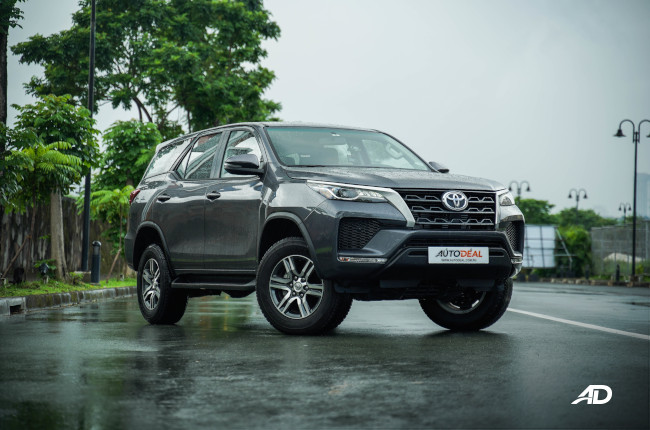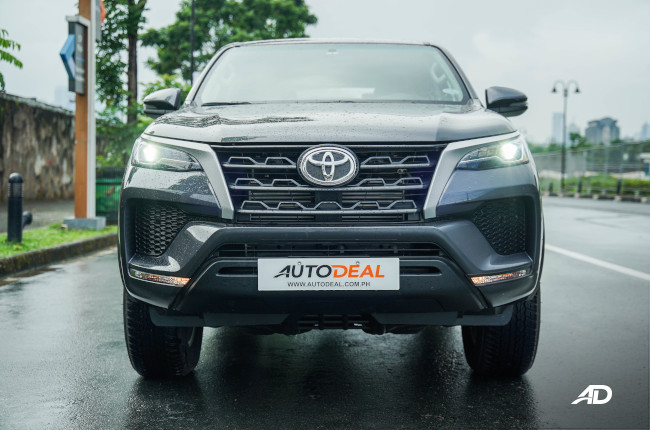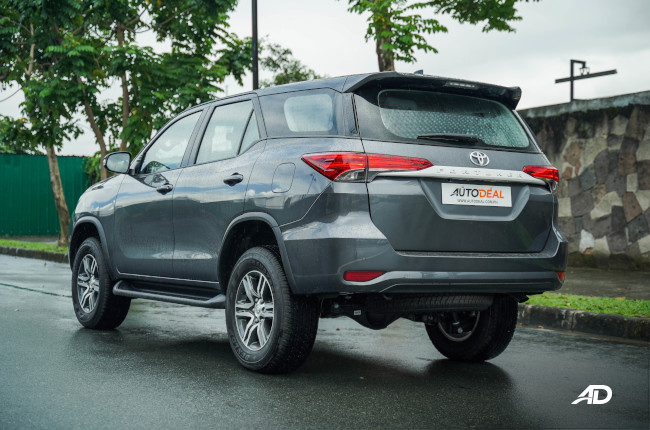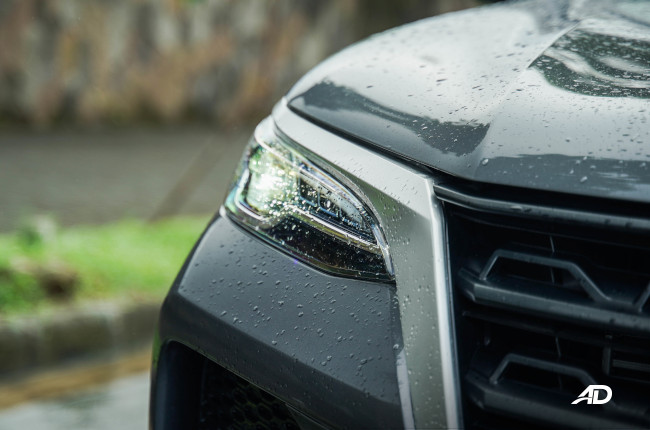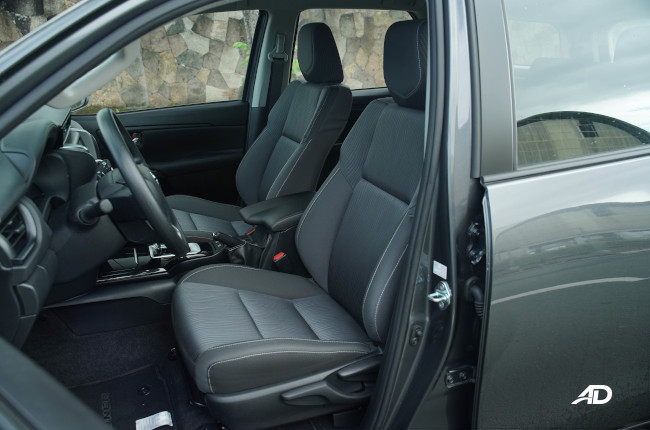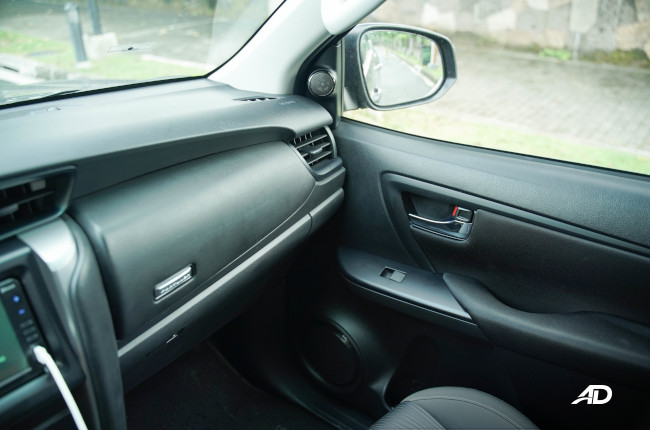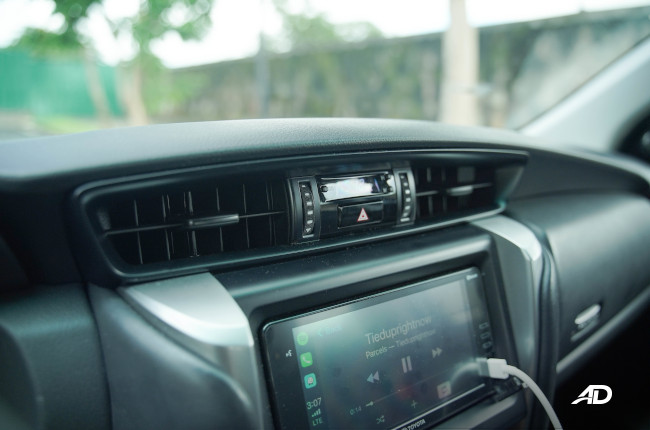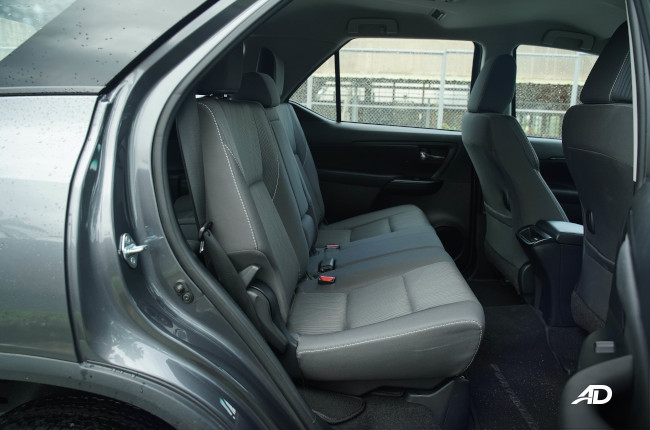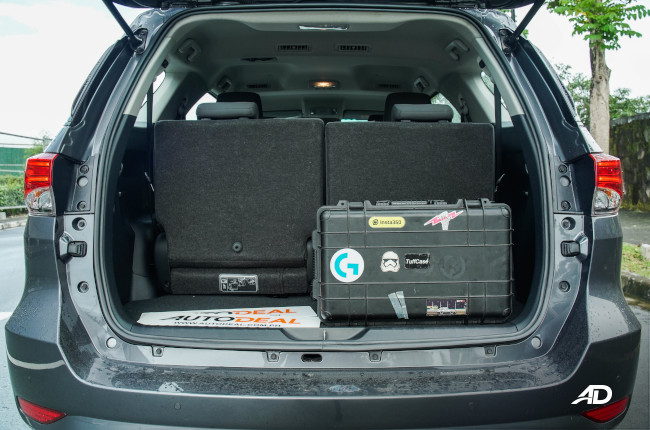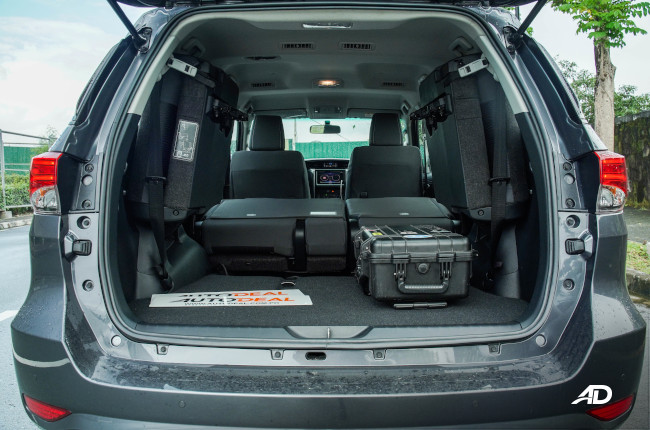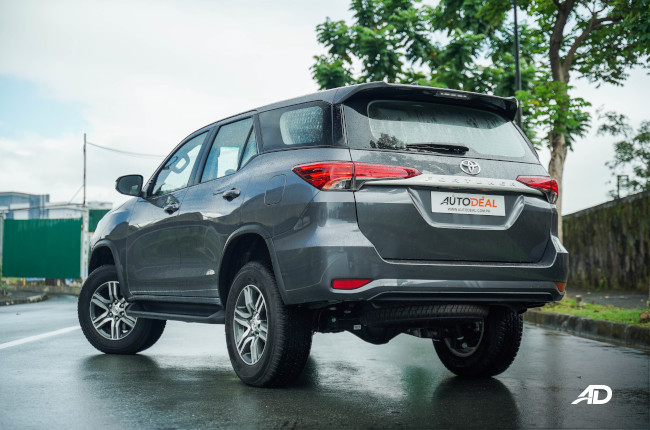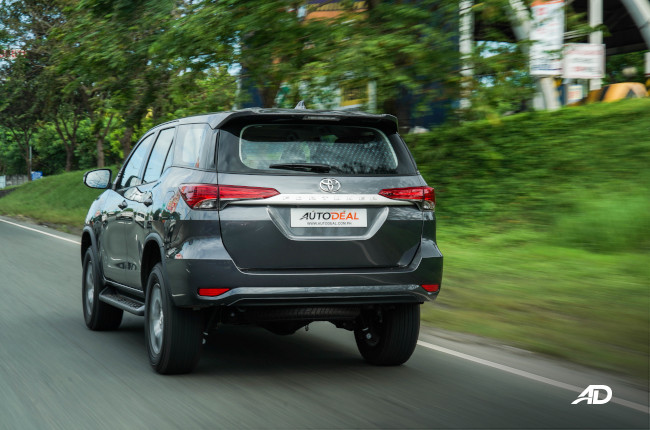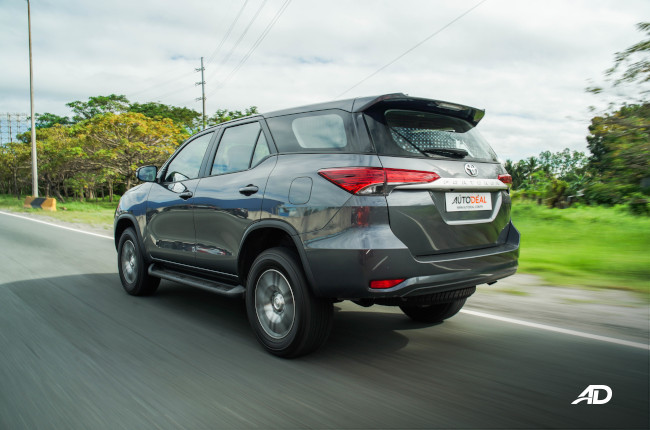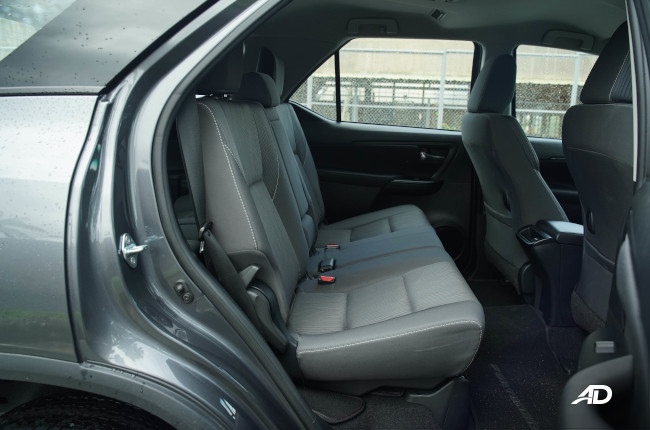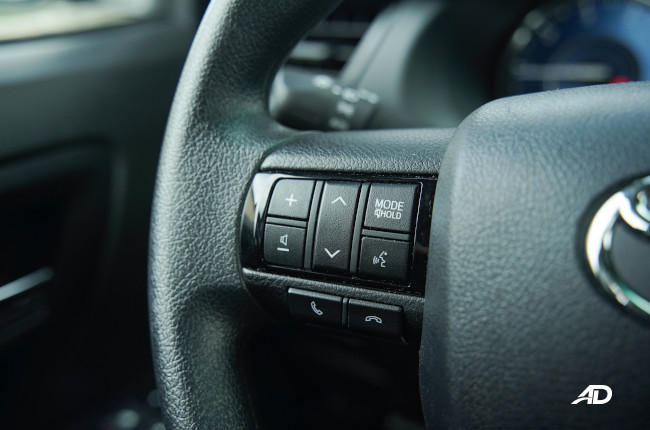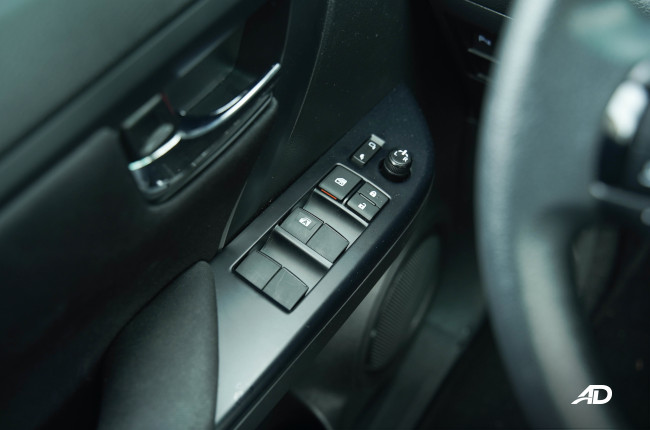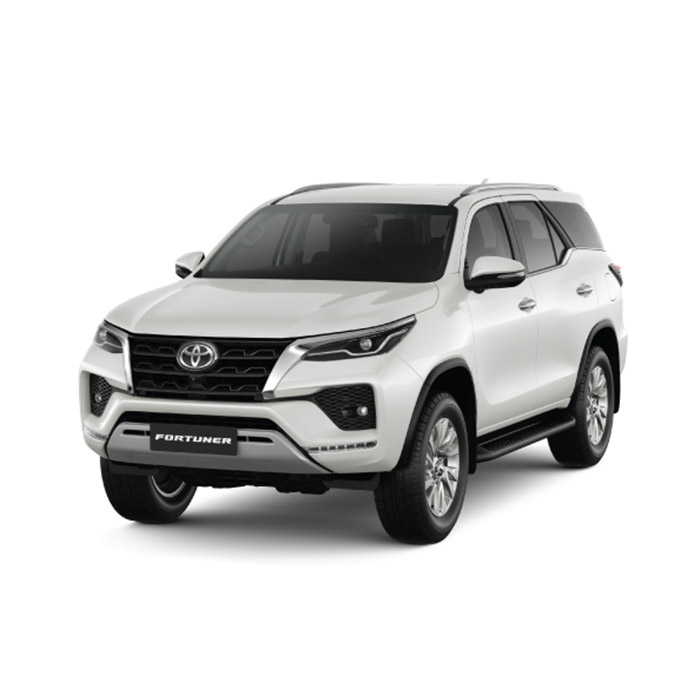
Contents
Since 2016, the Toyota Fortuner has been making waves in the Philippines, and since then, the midsize SUV made its rounds and even ended up being the best selling model in the Toyota lineup at some point. Fast forward to the 2021 year model, the biggest change includes an all-new lineup with two main models, the first being the LTD and the second being the normal G, V, and Q variants.
Not to take away from the grandeur of the LTD, but some of us just simply cannot afford the exorbitant price tag of such a variant. For your average Joe, however, the Toyota Fortuner G is the most affordable automatic variant of Toyota’s venerable SUV.
Engine Output (HP), Acceleration, Transmission, Handling 4.0/5
Exterior & Interior Design, Quality, Fit and Finish, Ergonomics 4.0/5
Cabin Comfort, Suspension, NVH Insulation 3.5/5
Convenience Technologies, Active and Passive Safety Features 4.0/5
Amount of the vehicle you get for the price, Fuel Efficiency 4.0/5
- infotainment comes standard with Apple CarPlay and Android Auto
- Bi-Beam LED headights as standard
- Updated fuel-efficiency over previous generation
- Livelier torque delievery
- Ride is not as refined
- Rear cargo is still compromised
- Passenger space is limited
Exterior
There are subtle updates for the 2021 model year, which include a bunch of front fascia revisions that give the Fortuner a much meaner look overall. The grille foregoes the chrome slats in favor of a more modern aesthetic with a wave-like pattern, and then you finally get headlights that are straight out of the pre-facelift’s spec sheet. Toyota’s Bi-beam LED headlights are finally a standard piece of kit for the Fortuner. The output is the same as before but has a slightly different styling thanks to the facelift. LED DRL’s are also great additions to the kit, which make this entry-level model a bit more premium.
Meanwhile, on its side, you’re dealing with a familiar profile, which can also be said about the rear, save for a few garnishes. Everything else is what we have grown used to over previous iterations of the Fortuner, and this SUV is no all-new model, instead, it is a facelift and a pretty nice one at that.

The wheels are retained from the previous generation. While we didn’t hate the look of it in the past, we weren’t fully in love with it. It’s a 6-spoke design that is familiar, but at least it is running with disc brakes all around now, which is a nice change of pace from the drums that populated the rears of Fortuners in the past.
Interior
Essentially, it is the same as prior generations, however, for the older G variant, we can see that Toyota has taken a step back and made the upholstery of this guy all black instead of the light tan-colored cloth that would stain the moment you introduced your family to the car. Now, running a car seat cover is more of an option instead of a necessity for the neat freaks out there.
You do get all the same touches, which isn’t totally a bad thing. Instead, you have to consider that this is just a facelift, so your expectations have to be set. While the Fortuner’s interior wasn’t the best in the business, it was still respectable enough, and even in the base model, it still is. The head and legroom of the passenger areas are a bit tight, however, especially in the third row, which is expected. The middle row isn’t the best either, and getting comfortable in the back isn’t going to be the easiest thing in the world. Sadly, we would have wanted more space here, but at least you have vents for the rear and middle rows.
The cargo space, however, is another sore spot. In our opinion, it is one of the more compromising in its class, thanks to the seats that don’t fold flat into the floor of the vehicle. You have to fold the seats down and out of the way to get access to that flat floor. When that opens up, however, you get 200 liters with the rear seats up, about 500 liters with the rear seats down, and over 1,000 with the second row out of the way, which is not bad but not class-leading.
Comfort

Now this area is where a lot of Fortuner owners could relate, and a lot of people will complain about it. Toyota hasn’t really touched the under chassis of the Fortuner, and that makes it a little disconcerting. Though it’s no pickup truck, it’s still not the plushest ride on the planet. Granted, you are still dealing with semi-independent suspension with coil springs at the rear instead of leaf springs like on the Hilux, but we expected at least a small revision to the SUV.
Though, we will say that NVH insulation is one of the best in the business for the category. Toyota has been on a roll with their 2021 year models, and all of their cars seem to sport very good sound deadening for the road and wind noise that will creep up at higher speeds, so while you may get bounced around a bit, you will be delighted to know that you won’t hear the wind and road noise as much.
Technology
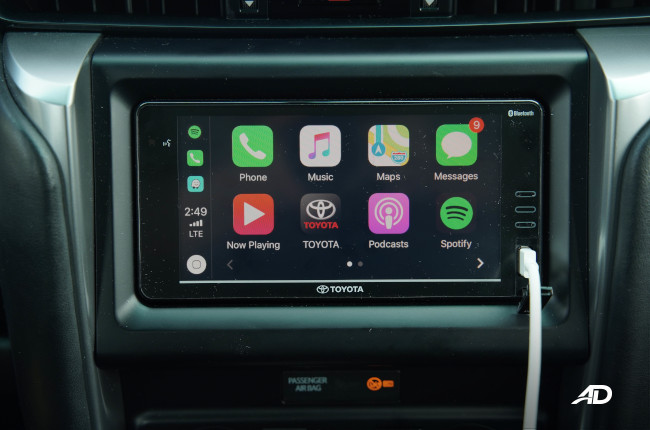
If this Fortuner was launched in 2016, it would outright beat the old model’s top of the line, at least in terms of features that matter. Now that it is 2021, we’re thankful that Toyota was able to give the Fortuner a backup camera as standard as well as Apple CarPlay and Android Auto as standard for their 6.75-inch infotainment system, however, you still get the parking sensors.

Being a base model, however, you will find that the essentials are all there. There is no cruise control to talk about either, just buttons on your steering wheel that help you control the infotainment system and also other functions in your gauge cluster, but that’s about it. Even the gauge cluster is the same as the prior iteration of the hill.
Safety

For safety, you can expect the Fortuner to have dual front airbags and a driver knee airbag. You also get ABS with EBD, stability, and traction control, hill start assist as well as ISOFIX child seat tethers.
While it is a good amount of kit, it doesn’t go above our expectations for the price point, and the fact that it is a more entry-level model.
Driving
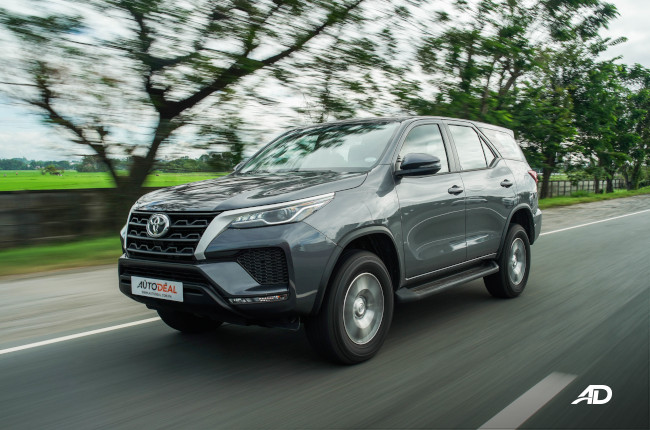
The question on a lot of people’s minds now is how does the new Fortuner drive, and is it better than the old one? The answer is yes, but not exponentially better. in terms of power, you get a few horses up from the prior model, but more torque. On the spec sheet, the 2.4-liter turbo diesel engine produces 148 hp and 400 Nm of torque, which is more than enough for most applications. We also felt that the torque delivery in the middle of the rev range was much punchier, and even Toyota stated that it would net better fuel economy figures, but more on that later.

Acceleration is still good, with generous amounts of torque going to the rear wheels. Sadly, no four-wheel-drive option for the Fortuner G, and the 2.4-liter engine, but with more weight, the 2.8-liter in the Q and LTD variants are more welcome. On top of that, actually getting up to speed was somewhat of a challenge, and there is no big improvement in terms of acceleration times for the car, but it has a slight difference in delivery which could get it up to highway speeds slightly quicker than the outgoing Fortuner. The transmission that the engine is mated to is a 6-speed automatic that performs decently. It’s very smooth, but shift up or down is clearly not its strong suit, as manual inputs might take up to a second to register.

Handling is what you would expect from a PPV, which means that it doesn’t take the twists well, but it does trample over imperfect roads without the risk of bottoming out unless you really push the ground clearance that it sits on. However, you should not push this SUV in the corners, as it will roll and also be noticeably unstable.
Fuel Economy

Toyota claimed, during the new Fortuner’s launch, that the newly-revised 2.4-liter diesel engine will get better fuel economy figures over its predecessor, and that much is true as well were able to get up to 11.5 km/L in the city then 9 to 10km/L when traffic hits, and up to 20 km/L on the highway or a bit more. These are pretty good figures considering that Toyota’s engine is still the same one from before and just refined over the years.
Verdict
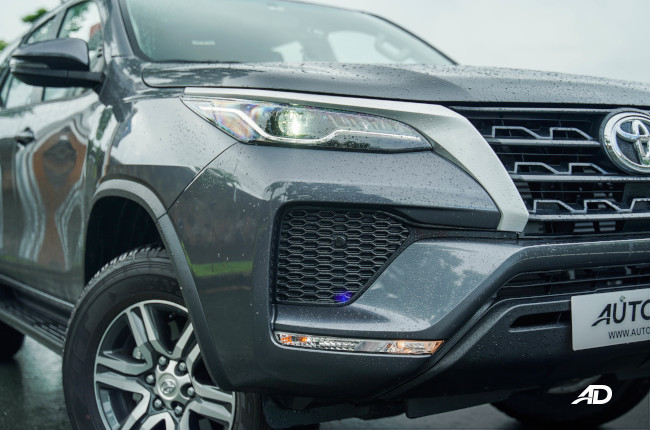
Honestly, the Fortuner is one of the staple choices in the country that never ceases to sell. While it is not amazing, it’s still a feat to see a brand like Toyota finally equipping its lowest trim automatic variant with a bunch of standard features that people have been clamoring for in the spec sheets of the prior top of the line model.
However, even at its most affordable, the Fortuner still holds that premium pricing that most Toyotas are known for. Of course, when you buy into a nameplate as proven as the Fortuner, it’s worth considering Toyota’s SUV, however, you will have to be willing to put up with the so-so space of the rear seats and the less than stellar ride quality.
So is it worth the P1,723,000 price that you have to pay? Well, that depends. Since it is a Toyota, you’re pretty much assured that you will get to keep the majority of your money after you decide to sell the car down the line. At least now, the Fortuner is finally going to stand the test of time and at least have a modern set of features that is all you can enjoy long after the new car smell has worn off.
Video Review
Exterior Photo Gallery
Interior Photo Gallery
Specifications
Engine
2.4 LFuel Type
DieselPerformance
148 hp @ 3,400 rpmTransmission
Automatic-
Summary
-
Name Toyota Fortuner 2.4 G Diesel 4x2 AT Body Type SUV Price ₱1,867,000 Transmission Category Automatic -
Engine
-
Engine Size 2.4 L Displacement 2,393 cc Number of Cylinders 4 Number of Valves 16 Transmission Type 6-Speed Automatic -
Performance
-
Drivetrain Rear Wheel Drive Max Output (hp) 148 hp @ 3,400 rpm Max Torque (nm) 400 Nm @ 2,000 rpm -
Economy & Environment
-
Fuel Type Diesel Emissions Standard Euro 5 Fuel Capacity 80.0 L *Combined Fuel Consumption 15.8 km/L *Autodeal Review
-
Dimensions
-
Length 4,795 mm Width 1,855 mm Height 1,835 mm Wheelbase 2,745 mm Turning Circle 12 m Ground Clearance 193 mm Trunk Capacity 200 L Number of Doors 5 Number of Seats 7 -
Safety & Security
-
Driver's Airbag 1 Front Passenger's Airbag 1 Side Airbag 2 Curtain Airbag 2 Knee Airbag 1 Auto Brake System Electronic Brake Distribution Anti-lock Brake System (ABS) with Electronic Brakeforce Distribution and Brake Assist
Immobilizer Security Alarm Stability Control Electronic Door Locks Speed Sensing Door Locks ISOFIX Lane Departure Warning System Blind-Spot Detection System -
Features
-
Cruise Control Front Parking Sensors Rear Parking Sensors Leather Upholstery Push Start Button Wheel Size 17 in Wheels Metal Type Alloy Airconditioning System Manual Air-Conditioning Entertainment System 7-inch display audio with 6-Speakers Connectivity Apple Carplay/Android Auto/AM/FM/Bluetooth/USB/ Voice Command Navigation Ready Warranty 3 Years (100,000 km) Keyless Entry Roof Rack Sunroof Electric Adjustable Seats Power Steering Power Windows Power Outlet Steering Wheel Audio Control -
Technology
-
Active Park Assist Hill Start Assist AWD Modes n/a Tire Pressure Monitoring Heads-up Display Power Liftgate Start-stop System
Colors
Latest Review
-
2025 BAIC B30e Dune 4x4 HEV Review / Review
After 1,000 km behind the wheel of the BAIC B30e Dune, we share what we loved about this hybrid and what we don’t.
4.2 / 5 -
2025 MG G50 Plus Lux DCT Review / Review
Can affordable price and VIP aspirations blend together? We find out in this review of the MG G50 Plus Lux DCT.
4.0 / 5 -
2025 BYD Seal 5 DM-i Premium Review / Review
We test-drove the BYD Seal 5 DM-i, and its features and affordable price make it a strong hybrid sedan contender.
4.2 / 5
Popular Articles
-
Cheapest cars under P700,000 in the Philippines
Jerome Tresvalles · Sep 02, 2024
-
First car or next car, the Ford EcoSport is a tough package to beat
Jun 18, 2021
-
Car Maintenance checklist and guide – here’s everything you need to know
Earl Lee · Jan 12, 2021
-
Most fuel efficient family cars in the Philippines
Bryan Aaron Rivera · Nov 27, 2020
-
2021 Geely Okavango — Everything you need to know
Joey Deriquito · Nov 19, 2020
-
Family cars in the Philippines with the biggest trunks
Sep 20, 2023
-
Head to head: Toyota Rush vs. Suzuki XL7
Joey Deriquito · Oct 28, 2020
-
Why oil changes are important for your car
Earl Lee · Nov 10, 2020
-
2021 Kia Stonic — What you need to know about it
Joey Deriquito · Oct 16, 2020
-
Top 7 tips for buying a used car in the Philippines
Joey Deriquito · Nov 26, 2020


